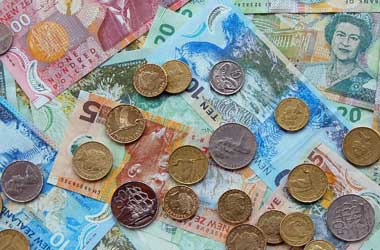 Despite news of a larger-than-expected trade deficit in September, the New Zealand dollar continues to gain ground versus the Eurodollar and other major currencies. It is noteworthy that imports expanded at a faster pace than exports throughout the period under review. Interestingly, the annual inflation rate reached a decade-high level in the third quarter of this year, according to official data.
Despite news of a larger-than-expected trade deficit in September, the New Zealand dollar continues to gain ground versus the Eurodollar and other major currencies. It is noteworthy that imports expanded at a faster pace than exports throughout the period under review. Interestingly, the annual inflation rate reached a decade-high level in the third quarter of this year, according to official data.
While I was writing this post, the EUR/NZD currency pair was trading at 1.6193, representing a 0.04 percent increase in the previous 24 hours. Compared to the same month the previous year, imports into New Zealand reached a new all-time high of NZD 6,567 million in September 2021, marking the third consecutive month of record imports into the country.
Vehicles, parts, and accessories were the most significant contribution to this increase, accounting for NZD 269 million (43 percent) of the total increase to NZD 895 million. In addition, the month of September 2021 had the greatest monthly value of electric car imports to date, with NZD 53 million in value. Other substantial increases in imports were seen in mechanical machinery and equipment (up NZD 192 million) and electrical machinery and equipment (up NZD 131 million), with mobile phones being the most major contribution to the increase in mechanical machinery and equipment (up NZD 60 million).
Exports from New Zealand increased 9.6 percent from a year earlier to NZD 4,396 million in September of 2021, according to Statistics New Zealand. The increase was mostly due to a steep 17 percent increase in sales of milk powder, butter, and cheese (up NZD 128 million), with milk powder accounting for the majority of the increase (up NZD 64 million).
Additionally, meat and edible offal increased by NZD 95 million (22%), while crude oil increased by NZD 62 million (14%) during the period under review (535 percent). The trade deficit in New Zealand increased to NZD 2,171 million in September of 2021 from NZD 1,023 million in the same month the previous year, according to the latest available data.
Because imports increased by 30.5 percent from a year earlier to an all-time high of NZD 6,567 million, it was the greatest trade imbalance on record. Imports of automobiles, parts, and accessories were the primary drivers of the increase. Meanwhile, exports increased at a slower rate of 9.6 percent to NZD 4,396 million, with milk powder, butter, and cheese accounting for the majority of the increase.
During the third quarter of 2021, the annual inflation rate in New Zealand reached 4.9 percent, the highest level since the second quarter of 2011, and much higher than the forecasted rate of 4.1 percent. Among the most significant sources of upward pressure were the cost of housing and household utilities (6 percent), with home ownership increasing by 12 percent; transportation (13 percent), with private transportation supplies and services increasing by 15 percent; and food (3.1 percent), with restaurant meals and prepared foods increasing by 4.5 percent.
If you compare this quarter to the previous quarter, inflation has grown to 2.2 percent, its highest level since the fourth quarter of 2010. Household-related expenditures, such as the building of new homes and local authority rates, were the primary drivers of the increase.




